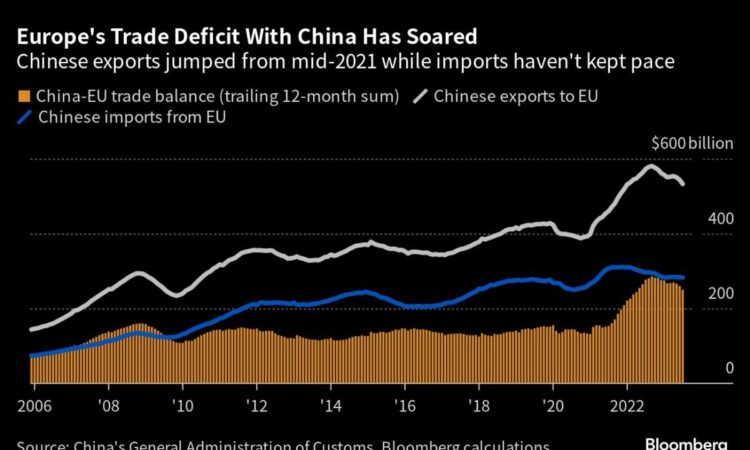
(Bloomberg) — A refusal by the US to clarify when it would remove punitive trade measures against the European Union is a key reason the transatlantic allies failed to reach an accord on steel trade this week that would have resolved a Trump-era dispute, according to the bloc’s chief trade negotiator.
Most Read from Bloomberg
Valdis Dombrovskis, an executive vice president at the European Commission, said the US previously agreed to work toward removing so-called Section 232 tariffs that hit more than $6 billion of EU steel and aluminum exports in 2018 as well as tariff-rate quotas that were introduced later as part of a temporary truce.
“The main stumbling block was absence of clarity from the US side on a clear timeline and how the 232 tariff-rate quotas would be removed,” Dombrovskis said in an interview Friday following a summit in Washington. “Unfortunately, we have not seen a strong commitment and engagement from the US side to make sure those tariffs” are being removed, he said.
US President Joe Biden, Commission President Ursula von der Leyen and European Council President Charles Michel were aiming to announce a deal on the so-called Global Arrangement on Sustainable Steel and Aluminum, or GSA, at the meeting. If an agreement isn’t reached by year-end, tariffs could return on billions of dollars of exports between the EU and US.
A spokesperson from the White House didn’t immediately reply to a request for comment.
The GSA talks are aimed at settling a dispute that started when then-President Donald Trump slapped tariffs on metals imports from Europe, citing risks to national security, to which the EU responded with retaliatory measures. It aims to tackle global excess capacity and carbon emissions of dirty metals, and would also be open to like-minded countries.
On excess capacity, the EU is open to launching investigations in the coming months that could lead to new tariffs aimed at the non-market practices of economies such as China, while the US could introduce additional levies of its own, Bloomberg previously reported. The bloc would implement the carbon element of the arrangements through its carbon border levy and the US could pursue its own measures, and the two sides could seek to coordinate their approaches in future.
Negotiators have been unable to bridge differences on whether the US would provide a clear path to remove the tariffs and tariff-rate quotas. The EU has been pushing to shelve the measures, while the US wants to retain the option of using them in the future to ensure the bloc adequately implements any accord.
Other unresolved issues include the compatibility of the arrangements with international trade rules, particularly amid concerns it looks like a way for the EU and Washington to gang up on Beijing, as well as the scope of the accords and which markets other than China they’d hit, according to people familiar with the discussions who spoke on the condition of anonymity.
‘Trump Tariffs’
A US official said that the lead up to the summit had been consumed by the conflict in Israel, and that was the main focus of the meeting. The official said the intention would be to roll over tariffs at the end of the year if more time was needed.
“It’s clear that no one wants to go back to the Trump tariffs,” Dombrovskis said. Agreement on how to move forward and any eventual deal needs the backing of all EU member states, he noted.
Dombrovskis also said that the current agreement isn’t equivalent on both sides, since the EU has removed all of its tariffs on the US, while significant American tariffs remain on the bloc’s steel.
“We are in an asymmetric situation and our aim is to address this asymmetry and that’s why we’re insisting on clarity on when and how those tariff-rate quotas will be removed,” he said. “There is a willingness of both sides to keep working intensively on those topics and eventually to resolve them.”
Most Read from Bloomberg Businessweek
©2023 Bloomberg L.P.






